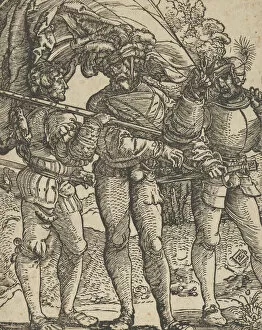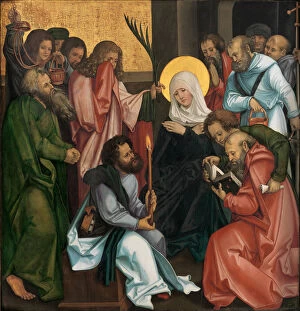Schaufelein Hans The Elder Collection (#3)
Hans Schaufelein the Elder, a renowned German artist of the 16th century, left an indelible mark on art history with his diverse range of captivating works
For sale as Licensed Images
Choose your image, Select your licence and Download the media
Hans Schaufelein the Elder, a renowned German artist of the 16th century, left an indelible mark on art history with his diverse range of captivating works. One such masterpiece is "The Parable of the Sower and the Weeds, " featured in Das Plenarium in 1517. Through his intricate brushwork and attention to detail, Schaufelein brings this biblical story to life, illustrating the struggle between good and evil. In another notable piece titled "Wild Man and Wild Woman" from 1545, created by Hans Guldenmond under Schaufelein's influence, we witness a fascinating portrayal of mythical creatures embodying untamed nature. This work showcases Schaufelein's ability to explore themes beyond religious narratives while maintaining his distinct artistic style. "Pilate Washing His Hands" is yet another significant artwork attributed to Schaufelein from Speculum passionis domini nostri Ihesu Christi in 1507. Here he captures a pivotal moment in Christian history as Pontius Pilate attempts to absolve himself of responsibility for Jesus' crucifixion. The artist's meticulous rendering evokes deep emotions within viewers as they contemplate the weighty decision faced by Pilate. Schaufelein also delved into capturing moments of joyous celebration like "Dancing Couple (IV)" from The Wedding Dancers series. With vibrant colors and dynamic movements, he immortalizes the exuberance felt during wedding festivities - a testament to his versatility as an artist. However, it was not just joyful scenes that captivated Schaufelein; he also explored darker narratives such as "Christ Scourged" and "The Arrest of Christ. " In these poignant works from Speculum passionis domini nostri Ihesu Christi in 1507, he depicts the suffering endured by Jesus before his crucifixion with great sensitivity and realism.




